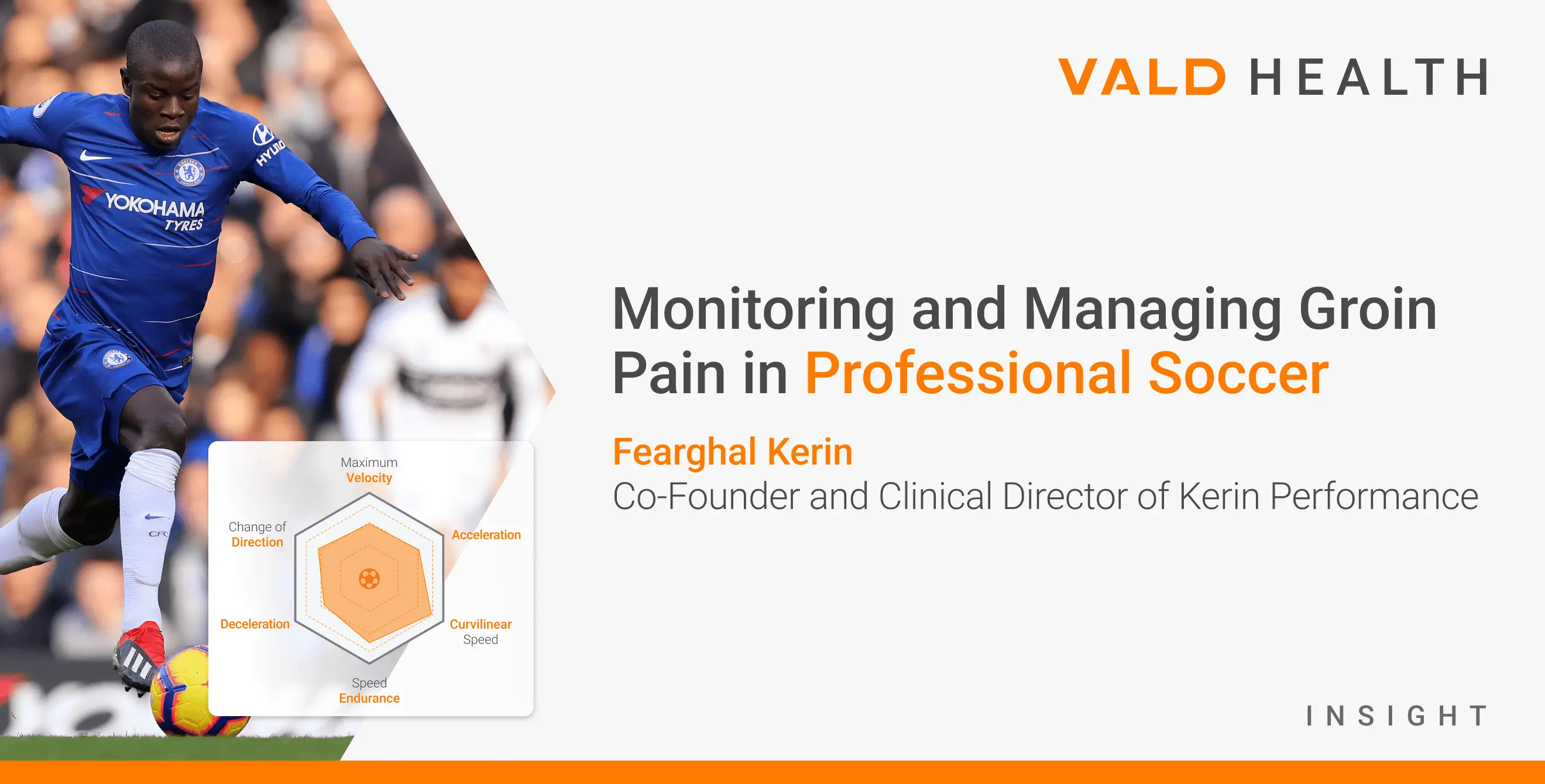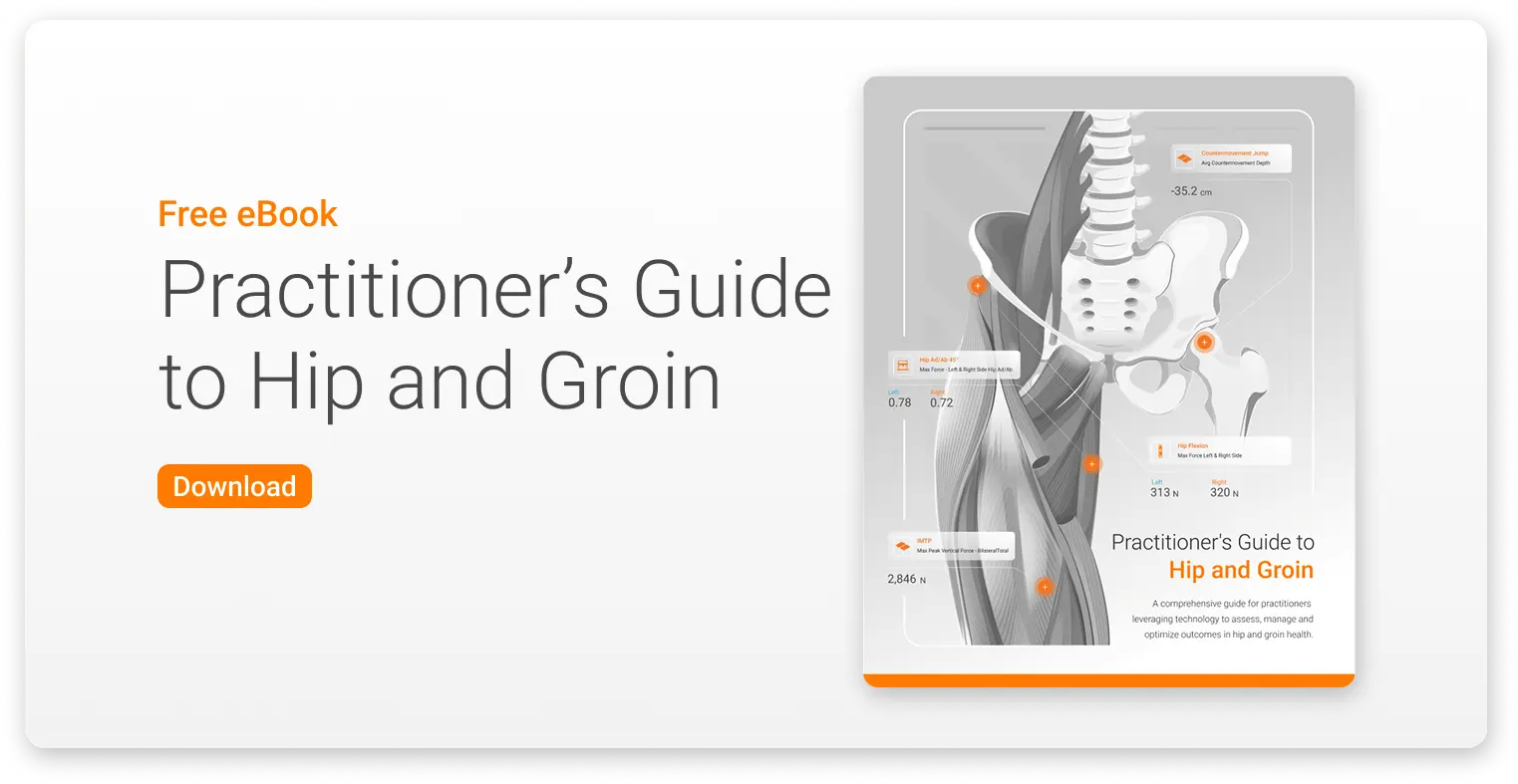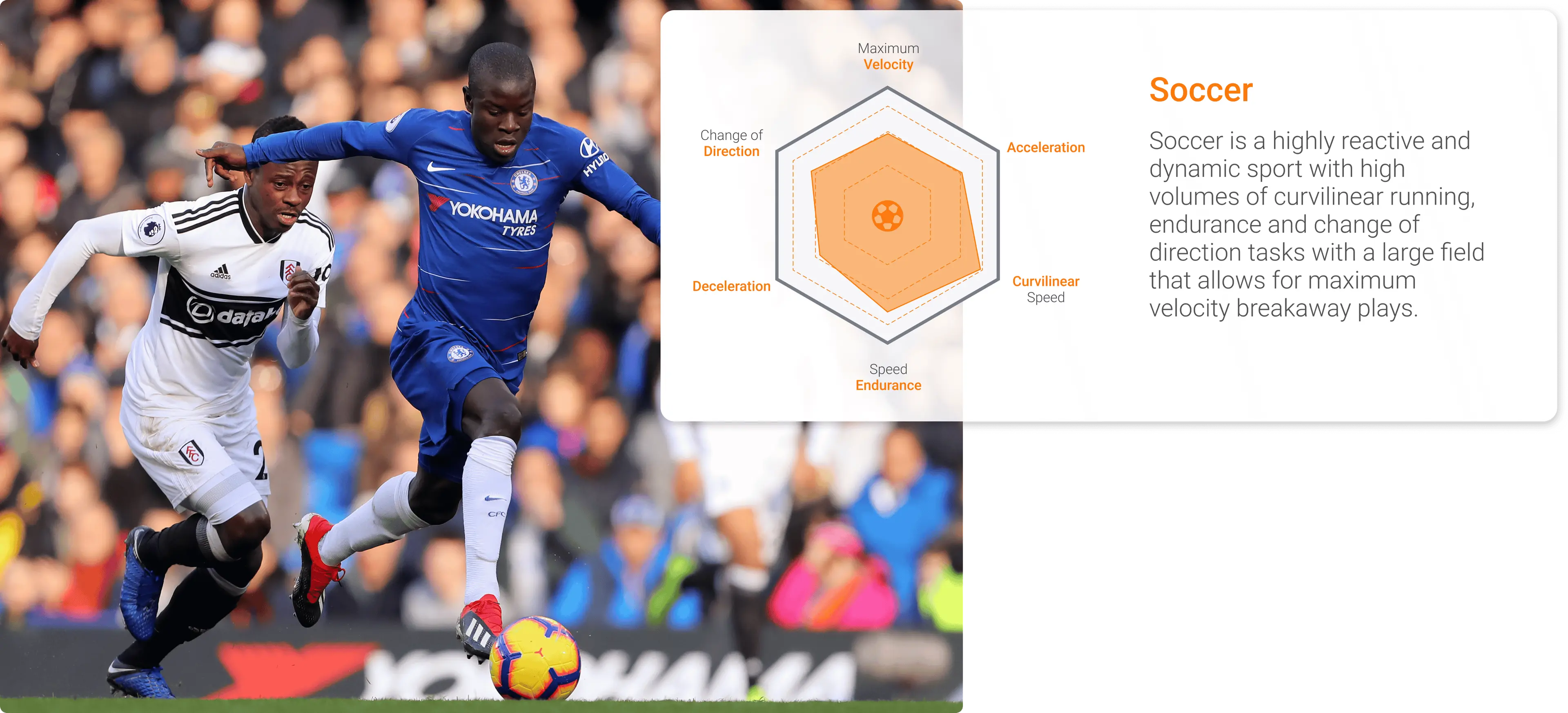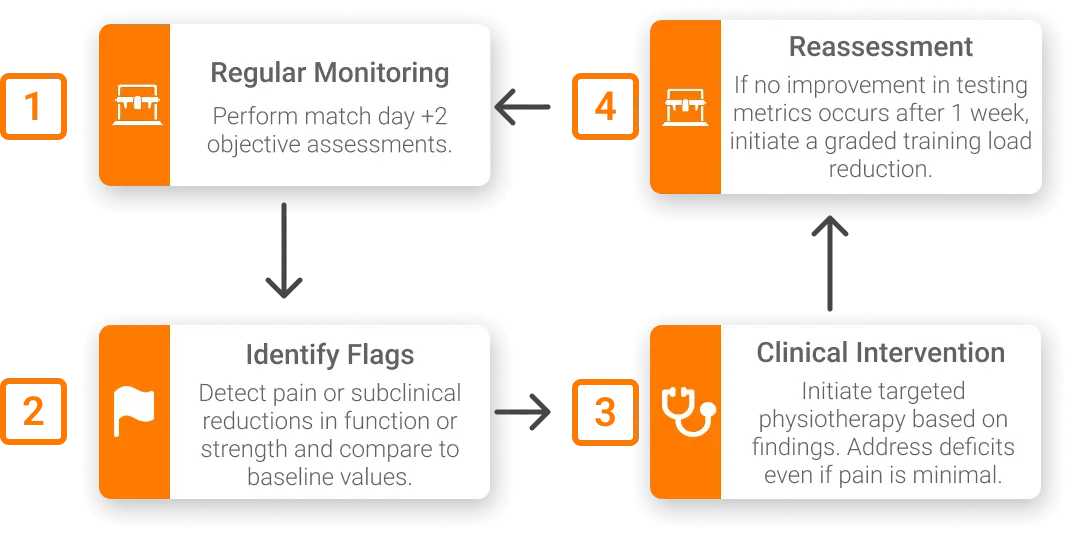Monitoring and Managing Groin Pain in Professional Soccer
Available in:
EN
About the Author
Fearghal Kerin, BSc, MSc, PhD, is a chartered physiotherapist with extensive experience in elite sport. He is the co-founder and clinical director of Kerin Performance.
He spent nine seasons as a rehabilitation physiotherapist at Leinster Rugby before joining Chelsea Football Club in the English Premier League, where he worked with international athletes, including Premier League, Champions League and World Cup winners.
Managing hip and groin pain, particularly chronic cases, remains one of the most challenging scenarios in clinical sports medicine. However, advancements in research and technology have provided more tools to guide rehabilitation frameworks.
Download our comprehensive Practitioner’s Guide to Hip and Groin for insights on using technology to assess, manage and optimize outcomes in hip and groin health.

Advances in Groin Pain Rehabilitation
A foundational approach often stems from Per Holmich’s seminal work (1999), which demonstrated that targeted adductor strengthening can yield positive outcomes in groin pain rehabilitation. This has led to an emphasis on adductor-centric exercises for a generation of rehabilitation programs. However, in practice, the site of pain is not necessarily the culprit.
…in practice, the site of pain is not necessarily the culprit.
More recent evidence by King et al. (2018) showed significant results using an intersegmental approach, focusing on the lumbopelvic region. Remarkably, athletes with up to two years of chronic groin pain returned to sport in an average of 9.9 weeks, with improvements not solely explained by changes in adductor strength.
…athletes with up to two years of chronic groin pain returned to sport in an average of 9.9 weeks, with improvements not solely explained by changes in adductor strength.
This presents a key question: where should rehabilitation focus, and is it always necessary to target the painful tissue directly?

The curvilinear running, endurance demands and frequent change of direction in soccer place a significant load on the lumbopelvic region.
The Doha Agreement identified four distinct clinical entities for categorizing groin pain in athletes: adductor-related, iliopsoas-related, inguinal-related and pubic-related groin pain (Weir et al., 2015). Additionally, hip-related groin pain and “other” causes are recognized as broader categories. With such disparity, objective testing becomes central to keeping rehabilitation outcomes focused.
…objective testing becomes central to keeping rehabilitation outcomes focused.
Using Objective Data Across Rehabilitation and Return to Play
Identifying specific areas of weakness, asymmetry or low strength can inform targeted intervention. Tools such as handheld dynamometers (DynaMo) or fixed-frame dynamometers (ForceFrame) allow for accurate assessment of isolated muscle strength and function, as well as range of motion.
Isometric or eccentric strength testing can reveal side-to-side asymmetries that may not be clinically detectable. Demonstrating an upward trend in data can be empowering for athletes, particularly those who feel they have reached a plateau. Even if the chosen rehabilitation approach does not directly load these areas, such metrics provide a reliable way to gauge progress and increase load tolerance.
Demonstrating an upward trend in data can be empowering for athletes, particularly those who feel they have reached a plateau.
Once baseline strength and control are restored, the focus can shift to dynamic tasks that challenge the hip and pelvis in sport-specific ways. Monitoring performance in tasks, such as jumping, landing and change of direction, can reveal residual deficits.
ForceDecks can capture data like ground contact times and asymmetries in jump performance, offering insights into readiness for more dynamic drills such as running and agility.
Case Example: Monitoring In-Season Groin Pain in Professional Soccer
DynaMo and ForceFrame can be used at a team level to monitor and manage in-season groin pain as part of regular match day +2 protocols. If an athlete develops pain or even reduced function on testing – that is still subclinical – this should activate a targeted management pathway involving clinical assessment and identifying an appropriate treatment plan.
If these testing outcomes do not improve, it may result in the next stage of the pathway, such as a reduction in training load. These processes can have a significant impact on the total number of days lost due to in-season groin pain.
These processes can have a significant impact on the total number of days lost due to in-season groin pain.

Objective testing pathway for managing in-season groin pain.
This approach highlights how regular, objective monitoring can prompt early intervention when pain or reduced function is detected. By incorporating tools like DynaMo and ForceFrame into match day +2 protocols, practitioners can better manage groin pain and reduce time lost to injury.
If you are looking to strengthen your approach to hip and groin rehabilitation by leveraging technology to assess, manage and optimize outcomes, explore our Practitioner’s Guide to Hip and Groin. For more information or to integrate VALD technology into your practice, reach out to our team here.
References
- Hölmich, P., Uhrskou, P., Ulnits, L., Kanstrup, I.-L., Nielsen, M. B., Bjerg, A. M., & Krogsgaard, K. (1999). Effectiveness of active physical training as treatment for long-standing adductor-related groin pain in athletes: Randomised trial. The Lancet, 353(9151), 439–443. https://doi.org/10.1016/s0140-6736(98)03340-6
- King, E., Franklyn-Miller, A., Richter, C., O’Reilly, E., Doolan, M., Moran, K., Strike, S., & Falvey, É. (2018). Clinical and biomechanical outcomes of rehabilitation targeting intersegmental control in athletic groin pain: Prospective cohort of 205 patients. British Journal of Sports Medicine, 52(16), 1054–1062. https://doi.org/10.1136/bjsports-2016-097089
- Weir, A., Brukner, P., Delahunt, E., Ekstrand, J., Griffin, D., Khan, K. M., Lovell, G., Meyers, W. C., Muschaweck, U., Orchard, J., Paajanen, H., Philippon, M., Reboul, G., Robinson, P., Schache, A. G., Schilders, E., Serner, A., Silvers, H., Thorborg, K., & Tyler, T. (2015). Doha agreement meeting on terminology and definitions in groin pain in athletes. British Journal of Sports Medicine, 49(12), 768–774. https://doi.org/10.1136/bjsports-2015-094869
